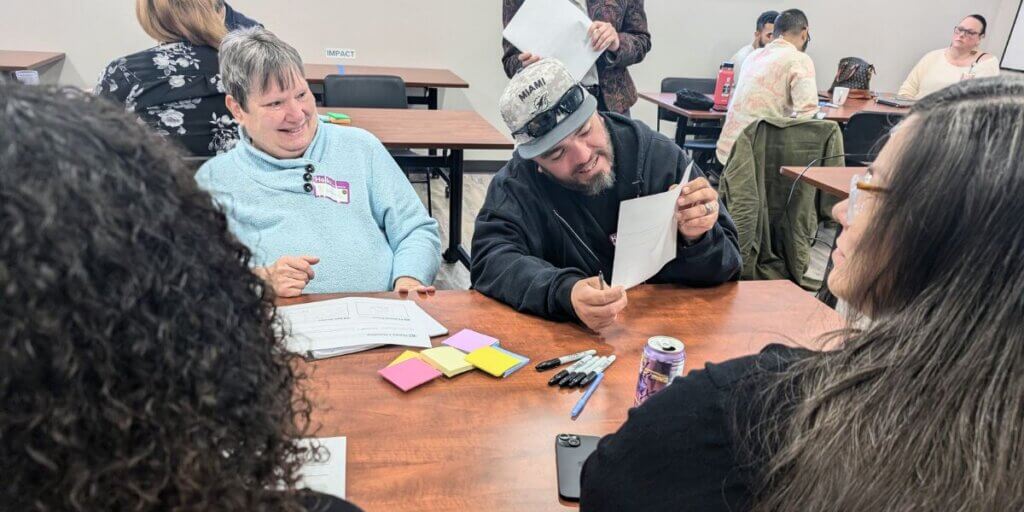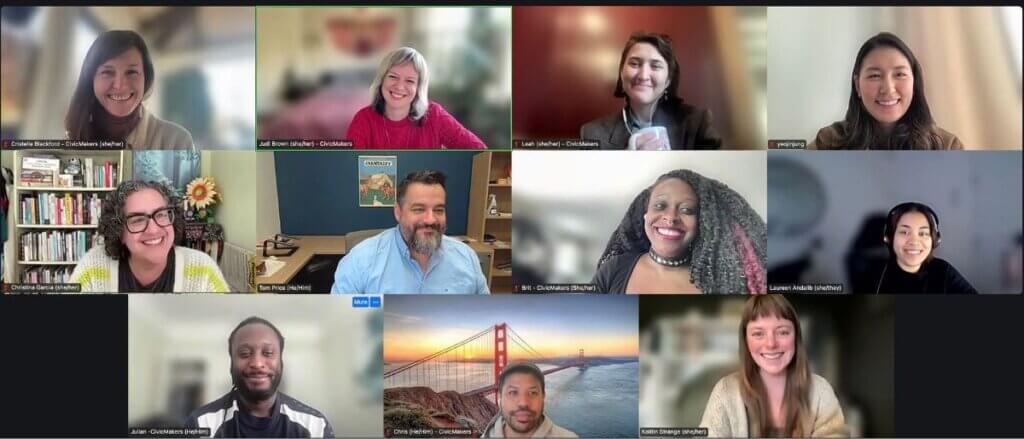One Civic Innovation Firm’s Reflections from the 2019 Code for America Summit
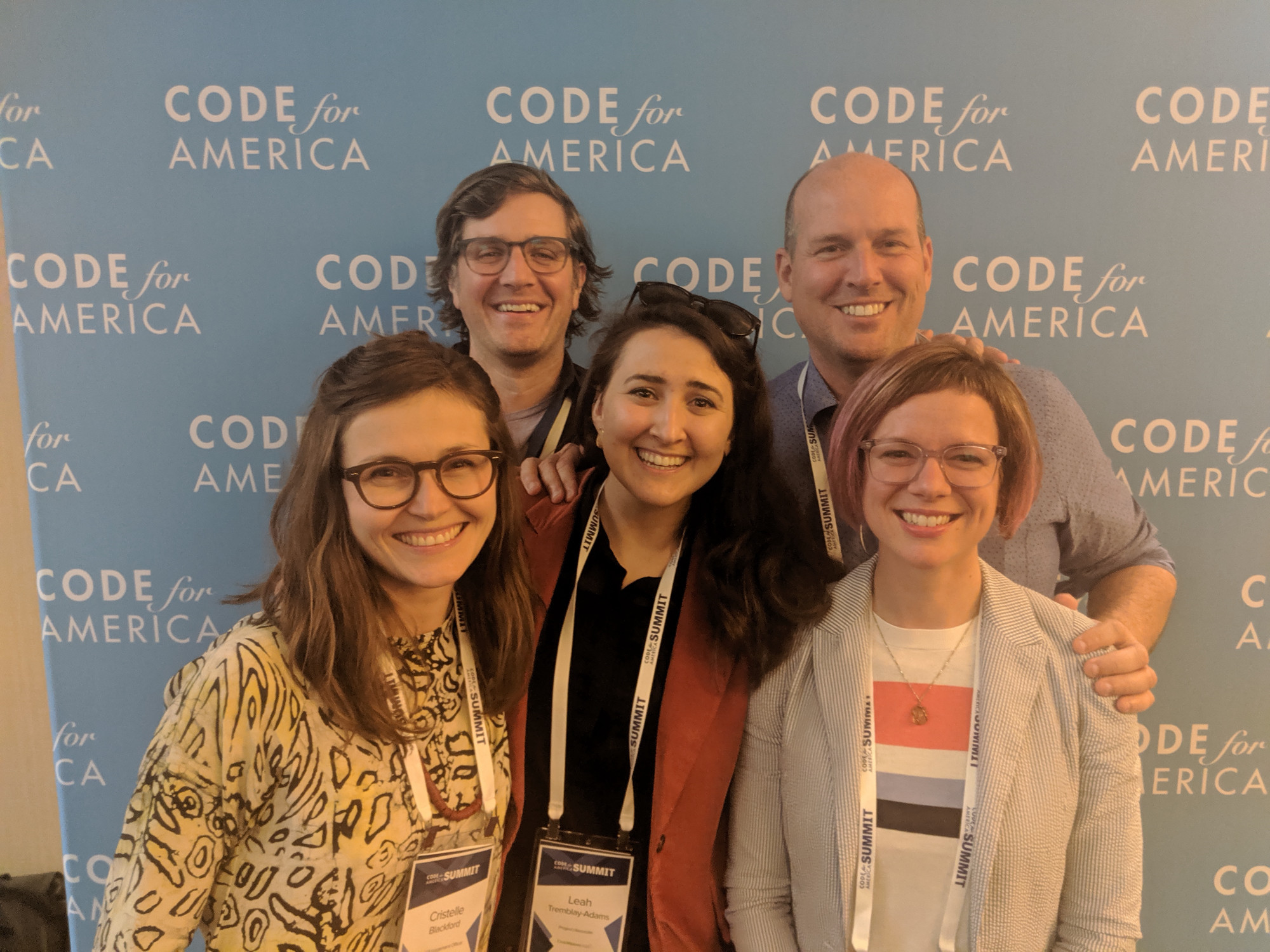
The CivicMakers team at Code for America Summit!
Last week, designers, technologists and public servants of all stripes descended on Oakland for the 2019 Code for America Summit. This incredible community comprises so many of our peers in the movement to design a more human-centered government, so this year we decided to send the entire CivicMakers team to dig into the mainstage talks, the breakout sessions, and the camaraderie of others in our field. Here’s a quick report back on what we heard, saw and felt!
Civic Mixer on Wednesday Night
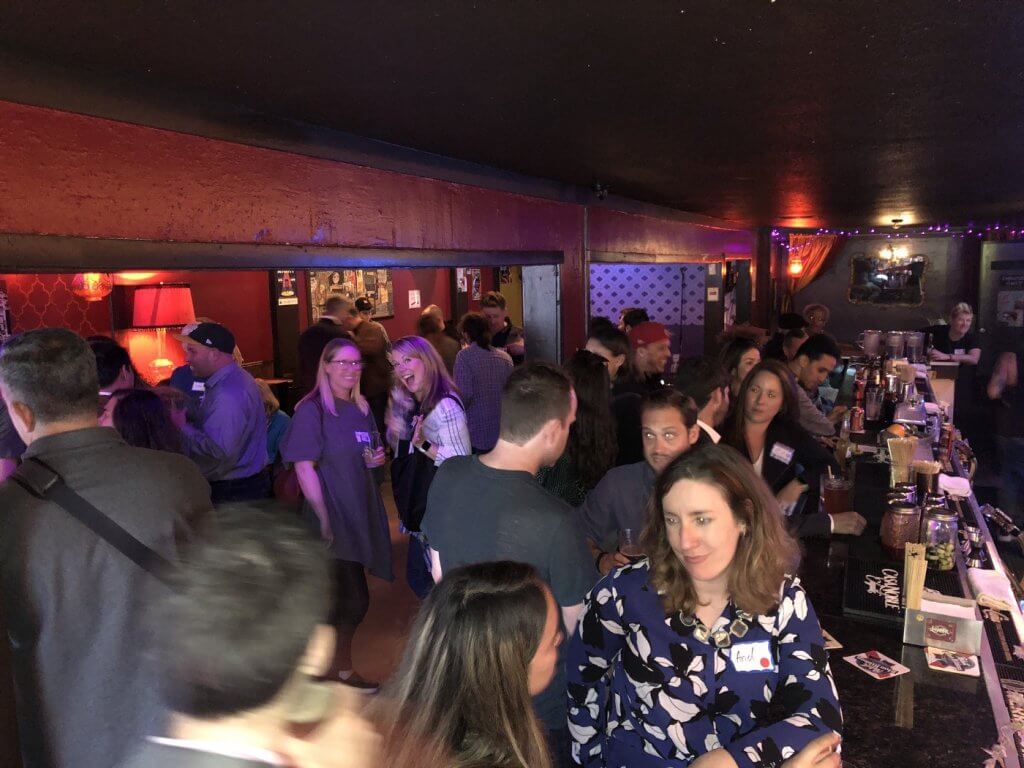 On Wednesday night, we hosted a Civic Mixer to kick off Summit with all of our favorite civic innovation peeps. More than 50 folks turned out for a swell time at the Layover. We thoroughly enjoyed ourselves and the company of so many amazing humans. Special thanks to our co-host for the evening, TechCongress!
On Wednesday night, we hosted a Civic Mixer to kick off Summit with all of our favorite civic innovation peeps. More than 50 folks turned out for a swell time at the Layover. We thoroughly enjoyed ourselves and the company of so many amazing humans. Special thanks to our co-host for the evening, TechCongress!
Reflections from the Team
On Thursday and Friday, we hit up as many sessions as we could. Here are some takeaways from the team…
Cristelle Blackford
- Nava PBC’s Service Blueprinting session embraced the value of “learning by doing.” Participants engaged in a hands-on blueprinting activity to map the process of getting a medical prescription. As someone who learns best in this way, I took more from this session than I would have if it were presented as a lecture.
- Harvard Kennedy School’s session on their new maturity framework model encourages digital services groups working in the public sector to agree on a theory of change and a strategy to work toward the desired outcomes, while leaving room for simple iteration as new learnings emerge from the work. We often see this lack of agreed-upon vision and acknowledgment that our assumptions might be wrong as a stumbling block for organizations large and small. Also, love that they welcome community input on their framework (click here to add your comments).
- The Smart Cities session with City of Baltimore, City of Austin, and the Sunlight Foundation asked participants to collaboratively identify the critical questions cities should ask about smart city projects to ensure the projects are focused on people and outcomes, not just technology. This session did a fantastic job of honoring the wisdom in the room. I learned as much from the presenters (very inspired by Baltimore!) as I did from the participants.
Jim Rettew
- Human-Centered Civic Tech: Almost all of Summit was about the human side of tech and data. Tech is not the sole answer but a useful tool. The real currency is trust. No longer can a civic hacker team parachute into a government department, tell everyone they’re here to save the day, and stage a take over. That just makes employees feel fearful and stupid. Now, the rightful focus is on building coalitions and commitment and tapping into the innovation that exists within each organization.
- Disaster relief is in serious need of innovation. Lessons from the Santa Rosa and Paradise fires were startling. Electronic processes at the EOC (emergency operations center) were ditched in favor of paper processes. Informational websites took weeks to set up and were not mobile-friendly. Information accessibility was an afterthought. Having worked on the front lines of the Red Cross, this is all too familiar. We need to pull our collective minds together to innovate in this space.
Judi Brown
- Marc Hébert, Director of the Innovation Office at San Francisco Human Services Agency, brought two members of his team to prototype an activity they’re working on to deepen their practice in equity-centered design. In their session, Equity as the Eggs Not the Icing, participants were given cards with various equity issues sourced directly from people who experienced them. We then talked in groups how we could make each situation or circumstance more equitable. I found this to be a very powerful exercise.
- I attended Public Service for and with the People: Building a Government Open Organization Through Culture, Code and Community because a couple of our government innovation (s)heroes were speaking: Angelica B. Quirarte Arias California Government Operations Agency and Rebecca Woodbury from the City of San Rafael. Angie shared her work on Code California and Rebecca shared the City of San Rafael’s draft strategic framework for her new office of Digital Service & Open Government (she’s still looking for input!). These were not new initiatives to me, but I appreciated the thoughtful way this session made comparisons across state and local efforts. I also loved Kelly DiMartino, Senior Assistant City Manager from Fort Collins, who shared the components of culture they use throughout the City: Vision Clarity; Alignment of Resources; and Creating Systems. Cool!
- Big ups to our friends at CivicActionsTeam for hosting a lively Civic Lounge at Trappist on Thursday evening! I got to chat with and forge connections with folks I otherwise wouldn’t have had the chance to meet at Summit proper. I also appreciated the vegan snacks and drinks they provided; a great way to end a long day of learning!
Lawrence Grodeska
- I was very impressed and heartened by the opening keynote from Alex Stamos on “Securing our Digital Democracy.” In the wake of fake news, Russian psyops, hacked government systems, etc., I was very grateful to hear someone keep it real on the mainstage about the challenges we face as a movement, and as a democratic society. We ignore these threats at our peril…
- It was a real treat to hear Mike Wilkening share his self-proclaimed “reluctant” journey to embracing innovation and culture change during his leadership tenure at California Health and Human Services Agency, particularly the importance of a strong, people-centered mission. Now, as Special Advisor on Innovation & Digital Services to Governor Gavin Newsom, Mike will be helping to inform exactly how the new California Office of Digital Innovation will carry the flag of culture change across the State, and California is lucky to have him.
Riffing on culture change, I was a little disappointed that there wasn’t more talk about how we ensure that the many innovation methodologies discussed will be adopted up by all public servants, not just those who have had the opportunity to plan in the innovation bubble. In particular, no one seems to be talking about the importance of change management as it relates to rolling out the new processes, products and people that most of the Summit was talking about. I hope we all begin to talk about the challenge of long term culture change more directly at future Summits.
Leah Tremblay-Adams
- I had already been inspired by Code for America’s Clear My Record initiative before the Summit, but this only deepened when I heard of its origin story. The project began with a focus on addressing the challenges in how individuals apply for record clearance. They worked hard to help connect people with the right kind of legal support and streamlined the application — but they ended up recognizing the injustice of putting the burden on individuals to clear their records, especially in such large-scale cases as California’s decriminalization of marijuana. I was inspired to learn of their pivot to automate and address this issue at scale, and shift that burden away from people who are already facing challenges around reentering the workforce and reintegrating into their communities.
- It was heartwarming to hear so many stories of how different projects and teams have been putting people before tech when it comes to problem-solving. To my surprise, this may have best been exemplified in the Design, Empathy, and the FBI session. The latest frontline of attacks on our country is digital, and in their efforts to better inform the private sector of security threats and how to protect against them, the FBI has had to adapt how they talk about and share security information. They’ve done so by seeking first to understand their private sector partners and how they can meet them where they are. In fact, when they shared their insights at the Summit, they hadn’t even reached the stage where they felt comfortable defining a technical solution — they were still learning and validating their insights.
- Another recurring theme of the event was trust, a concept that I have sought to engender through our work, but which has more recently taken on a self-serving connotation for me. I’ve been seeing examples in the public sector and change management where trust-building looks like frontline employees, such as social workers, managing the expectations of individuals that come seeking help. These employees work hard to connect people with needed services but are limited in their ability to effect change in the larger support system. For me, this echoes Norris Hung’s lightning talk on revolutionary design where he said “public facing servants end up being the cushion on a poorly designed chair.” What would it look like to go a step beyond building trust with individuals, to building a trustworthy system?
“Culture Stack” Design Jam
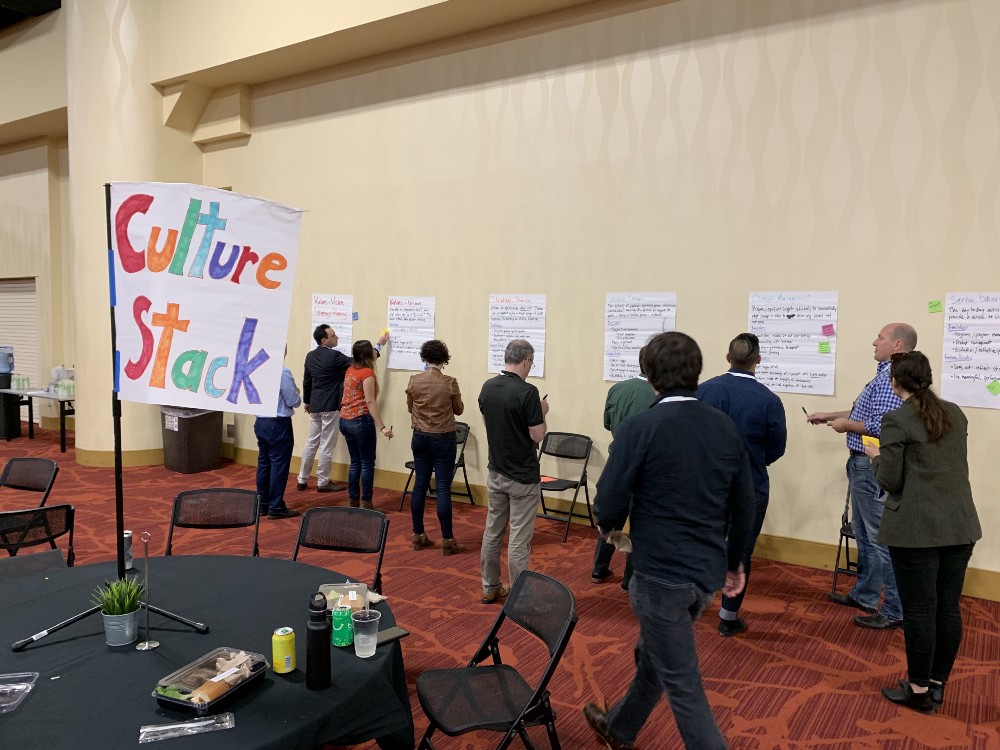
During lunch on Friday, we hosted a “guerrilla” design jam to open space for collaboration and conversation on a topic we live and breathe in our work, culture change. In particular, we wanted to hear from the lived experience of our peers to learn how they think about public sector culture in order to validate and refine our Culture Stack model. We had a great turnout of 20+ folks who jumped right in and went deep with us on what culture change really means, and how we move it forward. Thanks to all who participated! We’re compiling notes from the session and will be reporting back shortly.
What did you take away from the Summit? Let us know!
